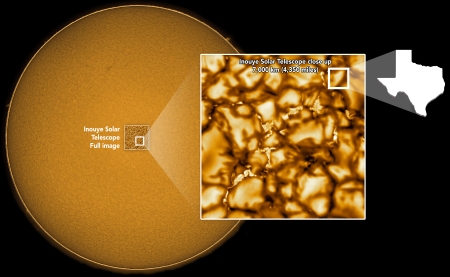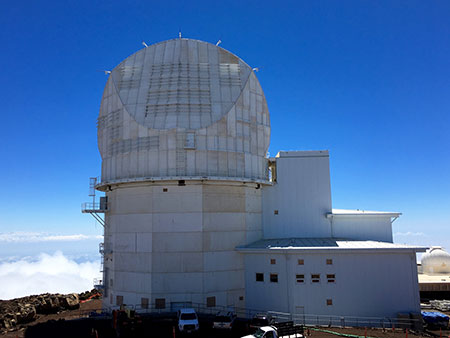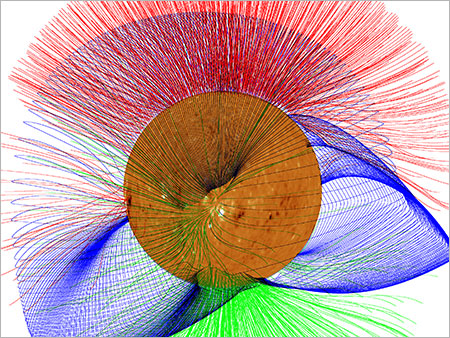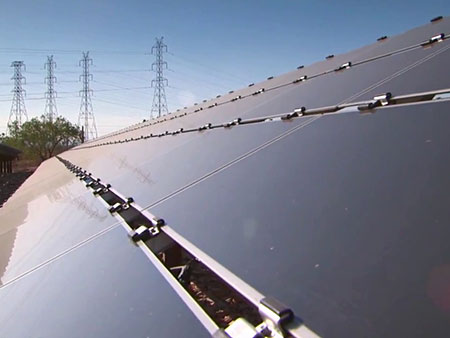
Image Captions and Credits

Solar Science
The Daniel K. Inouye Solar Telescope, can see the sun in greater detail than ever before. It produced its first images in 2020, showing cell-like structures hundreds of kilometers across, as well as the smallest features ever seen on the solar surface.
Credit: National Solar Observatory/AURA/NSF

NSF's Flagship Solar Observatory
The Daniel K. Inouye Solar Telescope (DKIST) will be the largest, most powerful solar telescope in the world when it comes online in 2020 in Maui, Hawaii. DKIST has been described as a combination of microscope and Swiss Army Knife because of the very detailed imagery it will be able to obtain and the multitude of instruments that will make up this facility.
Credit: Dave Boboltz, NSF

Space Weather
Magnetic fields wrap themselves up over approximately a five- to six-year period. Then, they spend the next five years winding down, relaxing and producing solar flares and eruptions. This 11-year cycle is called the solar activity/sunspot cycle. Understanding this process and its impact on solar weather is central to many NSF-funded solar physicists' work.
Credit: NSO/AURA/NSF

Solar Energy: Harnessing the sun's power
Have you seen those big, bulky, breakable photovoltaic cells that now collect the sun's rays? Well, what if solar energy could be harnessed using tiny collectors that could be spray painted on a roof, a wall or even a window? The science of converting sunlight into electrical energy is more than a century old, but the reality of doing it efficiently and affordably is ongoing, and NSF is funding that research.
Credit: Arizona State University

Plasma Physics
Solar prominences are bright features made of hot ionized gas called "plasma" extending outward from the sun's surface into the corona. Prominences often form loop-like structures shaped by solar magnetic fields. NSF-funded scientists study solar magnetism to determine how eruptive events like prominences and flares occur.
Credit: Woeger, Rimmele & Marino, NSO/AURA/NSF
Any opinions, findings, conclusions or recommendations presented in this material are only those of the presenter grantee/researcher, author, or agency employee; and do not necessarily reflect the views of the National Science Foundation.
